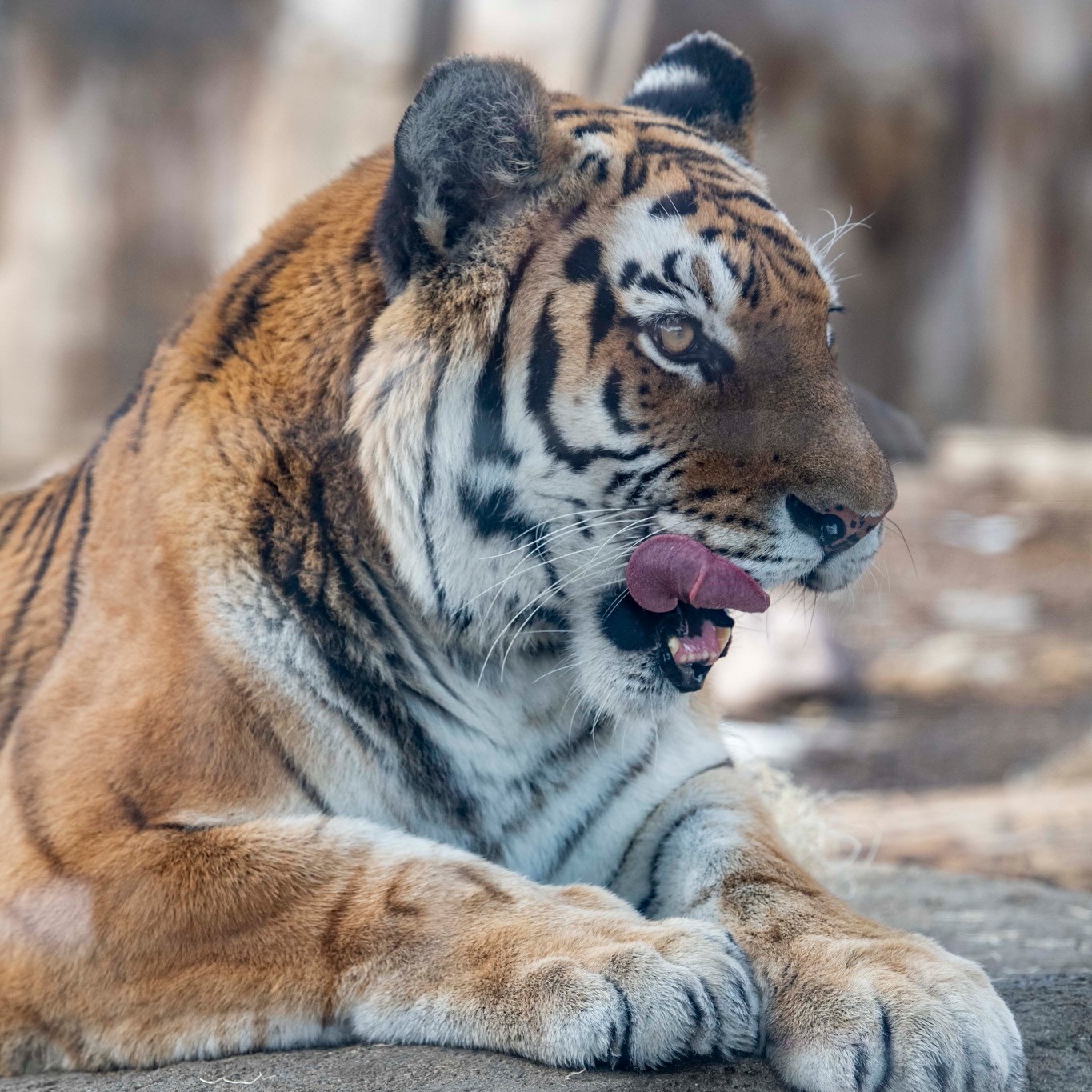- Examine the distinct characteristics of Amur tigers and their adaptation to harsh environments.
- Detail the life and attributes of Tiger Natasha as a representative of her subspecies.
- Explore the conservation efforts taken to protect Amur tigers from threats like poaching and habitat loss.
- Investigate the role of zoos and wildlife reserves in sustaining tiger populations.
- Discuss the importance of public awareness and education in tiger conservation.
The Amur tiger, also known as the Siberian tiger, is an impressive feline with distinguishing features adapted for survival in the freezing climates of Russia’s Far East regions. Among the many subjects of zoological interest is Tiger Natasha, a magnificent example of this subspecies, who helps us gain insight into the life and challenges faced by Amur tigers. These tigers are renowned for their pale orange coats and reduced number of stripes, an adaptation to their snowy habitat that provides camouflage against predators and aids in hunting. Each tiger bears distinct facial markings, much like human fingerprints, making them both identifiable and fascinating for researchers and conservationists.
Tiger Natasha embodies the Amur tiger’s spirit, showcasing both their majesty and vulnerability. Living in a regulated environment at a European zoological park, Natasha serves as an ambassador for her kind. Her upbringing and care are meticulously orchestrated by experts to replicate, as closely as possible, her natural habitat. With a dense coat to withstand frigid temperatures, Natasha is a living testament to the evolutionary ingenuity of Amur tigers. This adaptive trait is crucial for her survival, not just in terms of thermal regulation but also in maintaining her stealth within the snow-laden forests.
Tiger Natasha’s story isn’t just about survival—it’s also about conservation. The global population of Amur tigers remains critically low, with estimates suggesting fewer than 600 individuals in the wild. This staggering statistic reflects the importance of Natasha and her counterparts, both in captivity and the wild. Conservation strategies focus on safeguarding their natural habitats, combating poaching, and ensuring genetic diversity through well-managed breeding programs. Important organizations and conservationists work tirelessly to monitor these tigers, often using technology like GPS collar tracking and camera traps to gather data on their movements and behavior.
Zoos and wildlife reserves have emerged as indispensable allies in tiger conservation. Facilities that house Amur tigers, such as the one Natasha resides in, play an essential role in education and research. They provide a safe haven for tigers while enabling scientists to study their biology and behavior in controlled environments. These institutions adhere to stringent ethical and welfare standards to foster environments that promote the tigers’ physical and mental health. By providing educational programs, zoos raise awareness about the plight of tigers and inspire the public to support conservation efforts financially and ethically.
Public awareness and engagement are vital components of effective conservation strategies. Educational campaigns aimed at schools, communities, and policymakers help highlight the urgent need to protect these majestic creatures. By understanding the challenges faced by tigers like Natasha—habitat destruction, human-wildlife conflict, and climate change—the global community can contribute to solutions such as protecting critical habitats and supporting sustainable development initiatives.
Incorporating Tiger Natasha into this broader narrative underscores the potential for individual stories to resonate on a larger scale. Her presence at a zoo provides a physical connection to the threats Amur tigers face, fostering empathy and action among visitors. By engaging the public through both traditional and digital media, conservationists can cultivate a broad base of support for ongoing efforts to save the Amur tiger from extinction.
In summary, the conservation of Amur tigers, exemplified by Tiger Natasha, involves a multifaceted approach that combines adaptation, conservation, education, and public engagement. With coordinated efforts, the challenges facing these magnificent creatures can be addressed, ensuring not only their survival but their ability to thrive for generations to come.
*****
Source Description
Tiger Natasha 💚
Amur tigers have the palest orange coats and fewest stripes of all tiger subspecies. Their face markings can be used like human fingerprints for identification.


